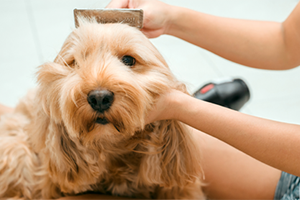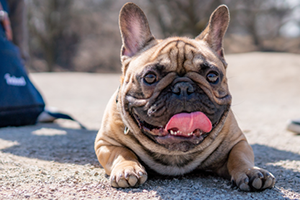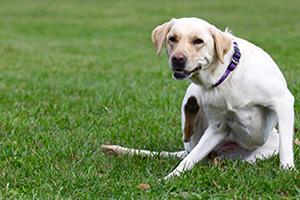What are some of the main things to consider when getting a dog, especially when it comes to the size of a breed? For instance, your living conditions, your lifestyle, your physical stamina, your finances?
Any dog, no matter the size, is for life, so making sure you’ve thought through every eventuality is important. On average dogs live for around 12 years, but some can live much longer. When considering a dog and choosing your breed, you should think about the following things:
- Do you have enough space inside and outside of your home to accommodate a dog? Larger breeds in particular will need lots of space inside simply to make life easier, whilst most dogs need a good amount of secure, outside space in which to stretch their legs.
- Do you have plenty of time to dedicate to a dog? Dogs are social creatures and love to be in the company of their families. You should make sure you have plenty of time to spend with your dog to prevent issues like separation anxiety, as well as time for training, exercise, play and general socialisation. Your dog should not be left on their own for more than 4 hours at a time.
- Are you able to walk or exercise your dog regularly? Different dog breeds require different amounts of exercise, ranging from around 30 minutes to 3 hours per day. Generally, larger breeds need more exercise to keep them fit and healthy as well as mentally stimulated, but some small breeds, such as active terriers, will also need a good length walk to keep them happy.
- Can you commit to the financial obligations that come with owning a dog? Just like any pet, dogs are a big responsibility, and there are costs associated with pet ownership. You will need to budget for food, vaccinations, neutering, parasite control, as well as vet care and pet insurance. Again, the breed of dog you choose will affect the exact amount you need to budget for – larger, more active breeds will eat more food, for example – but all dogs will need these basic care items
In what ways can it be harmful to your dog if they don't have enough room or the right amount of exercise?
Obesity is the main physical health risk associated with a lack of exercise. Overweight dogs are more prone to certain medical conditions such as joint issues, heart problems and diabetes.
However, behavioural issues may also arise if your dog is bored or under-exercised. Behavioural issues are a common reason pet owners decide to rehome their pets, which is distressing for both your pet and the family, so it is important to make sure you and your home are well equipped for a pet before you commit.
Does a dog’s size have any financial implications, in terms of the purchase price as well as ongoing maintenance and care?
The purchase price of a puppy is determined by the supply and demand of a particular breed, rather than their size when fully grown; a Pomeranian puppy could be more expensive than a Labrador puppy, for example.
Ongoing maintenance and care costs will also vary depending on the breed of your dog. Flat-faced breeds, such as Pugs and French Bulldogs, tend to be more expensive to insure than other, larger breeds, due to their propensity for health conditions, such as respiratory issues and eye conditions.
However, size does matter in terms of ongoing costs when it comes to their food. Larger, more active breeds often need a higher calorie intake and therefore eat more food than smaller breeds. As a rough rule of thumb, a dog will eat five times its body weight in dry food per year. If your dog needs a tailored diet, for management of a medical condition such as kidney disease, or an allergy, this will cost more per kilogram of food.
Vaccinations, flea and worming treatments and neutering may also cost more for larger dogs, so this is worth bearing in mind.
Do you have any advice for people who find it challenging to take care of their growing dog?
The best thing to do is to make sure you do thorough research before you choose a dog, to make sure you will be able to accommodate your pet once they have reached their adult size. You could ask a local vet, your breeder or rehoming centre about the average size of the breed you’re interested in.
If you feel your dog is getting too large for your home, try to dedicate a particular space to them. Kit this out with their toys, food and water bowls and their own bed or crate in which they can feel comfortable. If your pet has their own space to settle in, they are less likely to feel confused and confined in a smaller home.
On top of this, make sure your dog is getting lots of exercise and mental stimulation, in accordance with their breed’s needs. If your dog is getting plenty of exercise elsewhere, they will be more likely to settle when they are at home.
If you’re worried about handling a larger dog, a qualified behaviourist or trainer can be helpful to build your confidence and tackle any unwanted behaviours such as jumping up or pulling on the lead, which can be more difficult to manage in larger breeds.
Should people choose a dog based on their size as a puppy – is this a good indicator of their adult size?
All dogs are small as puppies and their puppy size is not a reliable measure to use when considering which breed will suit your home and lifestyle. This is because different dog breeds have different growth rates and some pups could continue growing up until they are 2 years old. Again, proper research before you commit to a dog will help you understand what size your puppy might grow to and whether or not you’ll be able to accommodate them.
A dog’s adult size is a really important consideration to take into account when choosing a dog. As mentioned, there are a few important size-related implications you’ll need to consider, such as the cost of food and parasite control, and space in your home. However, it’s also important to remember that having a dog, of any size, is a big responsibility and the decision to welcome a pet into your home should be considered carefully.



















